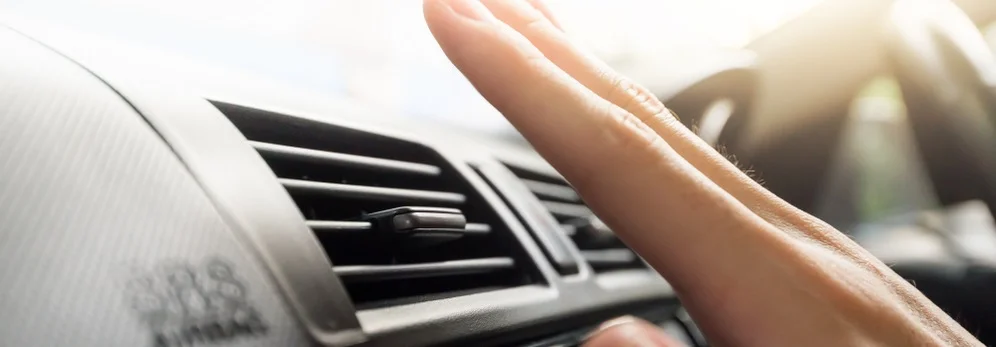Winter is here, and so is the need to warm up your car! Here are some essential tips to ensure a cozy and safe start in the chilly mornings:
1. RUN FOR 30 SECONDS
Even in the cold, modern cars run safely after about 30 seconds. If your car was made in the last 20-30 years, it uses fuel injection to push an air/fuel mixture into the engine and is ready to drive within about 30 seconds. A fuel injection system has sensors for atmospheric conditions like air pressure, temperature, and humidity and automatically adjust the air/fuel mixture. The newer the car, the more effective and numerous the sensors are. Because of this, it is a good idea to treat your fuel system with a fuel additive from your local AutoZone. Older vehicles used a carburetor to control the mixture going into the engine, with a manual or electric choke making the mixture rich. In cold temps, even electric choked carburetors needed a few minutes to warm up in order to prevent the engine from stalling.
2. DRIVE NORMAL FOR 5 MINUTES
Normal driving for 5-10 minutes warms your car up faster than idling. Your car runs most efficiently at normal operating temperatures. Driving your car normally will warm it up much faster than idling in the driveway. Long idle times waste fuel and cause increased wear and tear on components.
3. MODERN OIL AND LOW TEMPERATURES
While modern, high-quality oil flows better at low temperatures than oil of the past, there is still cause for concern about engine oiling in extreme cold during start-up. Synthetic Oils were originally designed for the very premise of extreme cold temperatures and holding their viscosity better. Once oil gets below 20 degrees Fahrenheit, it very rapidly loses its ability to hold viscosity and becomes thicker and thicker. This makes the original start-up in extreme cold more difficult on the engine, as it is trying to circulate thick, cold oil. The tell-tale sign of this in extreme cold is the ticking and clacking of lifters and engine components during the first 5 to 30 seconds of the engine firing up. Quickly though, as the engine rises in temperature, the oil will begin to flow well. The first number in oil weight, the one with a w, indicates the oil’s ability to perform in low temperatures (w stands for winter). The lower the w number, the better the oil maintains viscosity in cold temperatures
4. RESTRICTED VIEWS ARE DANGEROUS
Make sure your windshield is clear of ice, snow, and debris before driving. Keeping the inside of the windshield clean and clear of moisture will help with fog, before you ever have to use the defroster. If your windshield or windows are foggy, you may want to wait a minute for the defroster to heat up before driving off. Keeping a good ice scraper and snow brush handy can help get your windows clear quickly.
5. USE A BLOCK HEATER AND BATTERY PAD
If you live in or have traveled to the Upper Midwest, Canada or Alaska, you’ve probably seen a vehicle with an electrical power cord sticking out of the front bumper. These cords serve as a quick hook-up to AC power for electrical engine heaters, which are a must-have in extreme cold climates, especially for diesel engines. Engine heaters come in a variety of forms – from oil heaters for the dipstick, heating pads, or magnetic heaters that stick on the oil pan, to coolant heaters that go into the flow of antifreeze on the engine, or battery heating pads to keep your battery warm. If overnight temperatures are 0 degrees Fahrenheit or lower, you may consider an engine block heater and battery pad heater or battery thermal wrap. Both items attach to your car and then plug into an electrical outlet. Some engine block heaters come with timers so you can plan when your engine is ready to drive in the morning. For areas that get constant temperatures in the winter sub-zero, a permanent heater is generally a good practice. For areas that only see several days in sub-zero, using a magnetic heater that attaches to the oil pan overnight is often a good choice. For your battery, trying to hold a charge in very low temps can be draining and potentially harm your alternator. Starting a cold car with a cold battery the defroster, radio, seat warmers, or more puts a heavy strain on the electrical system. Help your battery and reduce this strain with a battery pad heater.
6. USE A FUEL ADDITIVE
Water in the fuel system can be an awful issue to deal with in extreme cold. What’s worse, is diesel fuel is prone to “gelling” in extreme cold temperatures as well. Using a fuel additive such as Heat in a gasoline engine, or Diesel 911 in diesel engines can help insure your fuel is protected.

